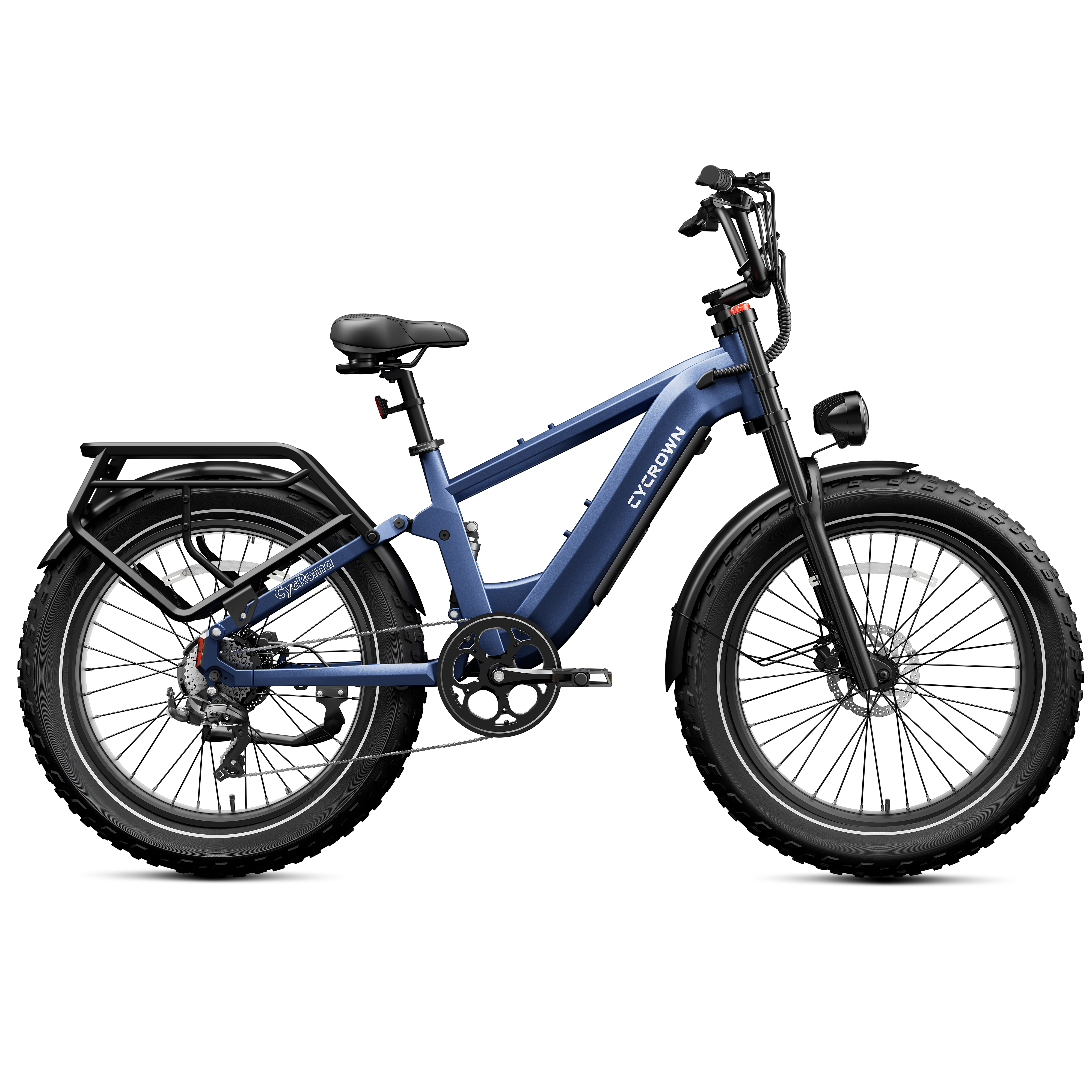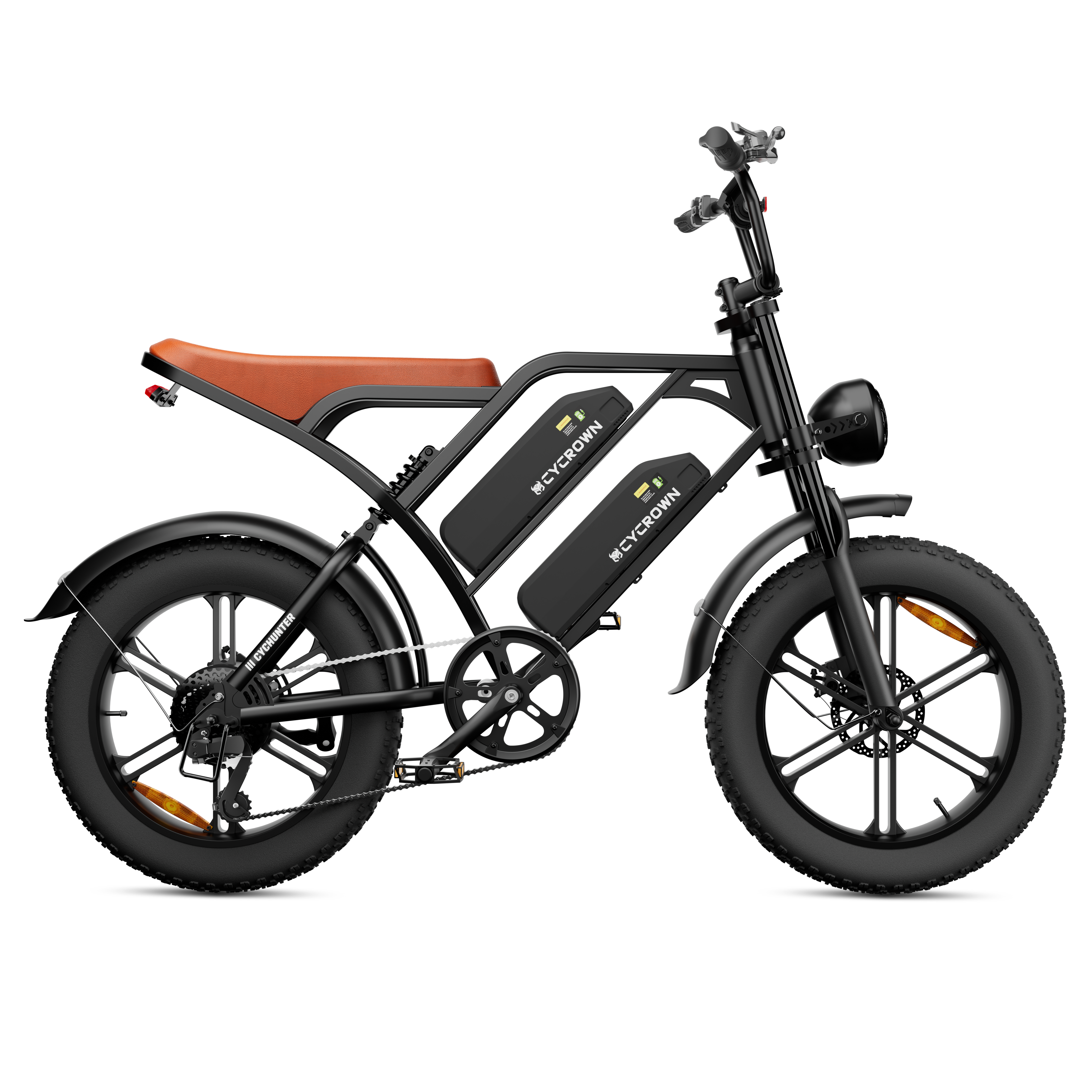Curious about what a cadence sensor is? In simple terms, a cadence sensor is a small device that measures how fast you’re pedaling your bike.
Whether you’re a beginner or a pro, understanding cadence sensors can help you become a better, safer, and more efficient cyclist.
If you want to get the most out of your rides and learn how this handy gadget works, keep reading to discover everything you need to know about cadence sensors!
What Is a Cadence Sensor?
It’s easy to get confused by all the gadgets on bikes today, but a cadence sensor is actually pretty simple. A cadence sensor is a gadget that attaches to your bike and keeps track of how many times you turn the pedals each minute.
With a cadence sensor, you can see your pedal speed in real time on your bike computer or phone. Cyclists use cadence sensors on all kinds of bikes: regular bicycles, electric bikes (e-bikes), and even indoor trainers.
🚲 Want to learn more about different types of e-bikes and how they work? Check out our helpful guide.
How Does a Cadence Sensor Work?
Understanding how a cadence sensor works can help you get the most out of it. These sensors use clever technology to measure your pedal speed and show you the numbers while you ride.
The Basics: Measuring Pedal Speed
✨ Magnet and Sensor Method:
- A small magnet attaches to your pedal or crank arm.
- The sensor sits nearby on your bike frame.
- Every time the magnet passes by, the sensor counts a pedal revolution.
✨ Accelerometer Method:
- Uses tiny motion detectors (called accelerometers).
- Measures your pedal speed without any magnets at all.
Where You’ll Find Cadence Sensors
Most cadence sensors are placed on the crank arm (the part your pedal attaches to) or nearby on the bike frame. They’re small, lightweight, and easy to hide so they won’t get in your way.
Once set up, the sensor sends your cadence data wirelessly to your bike computer, smartphone, or e-bike display.
How the Data Helps You
By tracking your cadence, you can see if you’re pedaling too slow or too fast. This information helps you adjust your pace, save energy, and avoid muscle fatigue.
It’s like having a coach on your handlebars!
Cadence Sensor vs Speed Sensor: What’s the Difference?
Many people wonder if a cadence sensor is the same as a speed sensor. While both track your ride, they measure different things and are used for different purposes.
|
Feature |
Cadence Sensor |
Speed Sensor |
|
What it measures |
Pedal speed (pedal revolutions per minute) |
Bike speed (miles or kilometers per hour) |
|
How it helps |
Helps you find your best pedaling rhythm and improve technique |
Shows how fast you’re going and tracks distance |
|
Why both are important |
Lets you train smarter, avoid fatigue, and ride efficiently |
Lets you monitor progress, set speed goals, and track location |
|
When to use |
When you want to improve pedaling technique or indoor training |
When tracking distance, speed, or riding without GPS |
Knowing your cadence helps you find the best rhythm for your legs, while speed tells you how quickly you’re covering ground.
Some cyclists use both sensors together to get a complete picture of their performance.
🚲 Curious about the differences between hub-drive and mid-drive e-bikes? Don’t forget to check out this comparison.
Cadence Sensor vs Torque Sensor: Which One Do You Need?
If you’ve heard about torque sensors, you might be wondering how they compare to cadence sensors. Both are popular on e-bikes, but they work in different ways and give you different riding experiences.
|
Feature |
Cadence Sensor |
Torque Sensor |
|
What it measures |
Pedal speed (how fast you spin the pedals) |
Pedal force (how hard you push on the pedals) |
|
How it works |
Counts pedal revolutions per minute (RPM) |
Measures your pedaling force or pressure |
|
Ride feel |
Motor gives power based on pedal speed |
Motor gives power based on your pedal effort |
|
Complexity |
Simpler and usually less expensive |
More advanced and often pricier |
|
Best for |
Riders who want to focus on rhythm and simplicity |
Riders who want a smoother, more natural ride |
|
Common use |
All bikes, especially entry-level e-bikes |
High-end e-bikes, riders seeking responsive power |
If you want to keep things simple and track your pedal rhythm, a cadence sensor is a great choice. If you ride an e-bike and want the smoothest and most responsive motor help, you might prefer a torque sensor.
For maximum responsiveness, some e-bikes actually use both torque and cadence sensors together. This combination allows the motor to react to both how fast and how hard you’re pedaling, giving you a more natural and intuitive riding experience.
🚲 Want to learn more about how torque sensors work on e-bikes? Browse our detailed explanation.
Top Benefits of Using a Cadence Sensor
Using a cadence sensor isn’t just for serious cyclists. Anyone can benefit from the helpful information it provides. Here are some of the top reasons to use one on your rides.
✅ Improve Your Cycling Efficiency
Riding at your ideal cadence helps you use your energy wisely. You’ll pedal smoother and tire out less quickly.
✅ Prevent Injuries and Overexertion
A cadence sensor can help you avoid pushing too hard or spinning too slowly, which can lead to sore muscles or even injuries.
✅ Track Your Progress and Set Goals
With real numbers to look at, you can set new cycling goals and see how much you improve over time.
✅ Make Indoor Training More Effective
If you use a stationary bike or indoor trainer, a cadence sensor makes your workouts more fun and focused.
✅ Enhance Your E-Bike Experience
Many e-bikes use cadence sensors to control how much motor help you get, making your rides smoother and more enjoyable.
🚲 For more safety tips when riding electric bikes, don’t forget to read these important guidelines.
How to Install and Use a Cadence Sensor
Setting up a cadence sensor is simpler than you might think. With a few easy steps, you’ll be ready to track your pedaling and improve your rides.
Step-by-Step Installation
- Choose the right spot: Most cadence sensors attach to the inside of your bike’s crank arm.
- Attach the sensor: Use the included straps or adhesive pads to secure the sensor.
- Install the magnet (if needed): Place the magnet on your pedal or crank so it passes close to the sensor.
- Pair the sensor: Follow your bike computer or smartphone app’s instructions to connect the sensor via Bluetooth or ANT+.
Tips for Accurate Readings
- Make sure the sensor and magnet are lined up correctly.
- Keep the sensor clean and dry.
- Check the batteries every few months.
Using the Data
Once it’s set up, you’ll see your cadence on your display. Try to keep your cadence in a comfortable range. Most cyclists aim for 70 to 90 RPM.
Best Cadence Sensors for Cyclists
With so many cadence sensors out there, it can be tough to know which one to choose. Here are a few things to keep in mind when picking the best sensor for your bike.
What to Look For
✅ Wireless connectivity: Bluetooth and ANT+ are the most common.
✅ Battery life: Some sensors last for months or even a year on one battery.
✅ Easy installation: Look for sensors that are easy to mount and move between bikes.
✅ Compatibility: Make sure your sensor works with your bike computer or smartphone app.
Types of Bikes
Cadence sensors work on road bikes, mountain bikes, e-bikes, and even indoor bikes. Some sensors are designed to be extra tough for off-road use, while others are super lightweight for racing.
Price Range
You can find basic cadence sensors for a low price, while more advanced models with extra features cost a bit more. Choose what fits your needs and budget.
Tips for Getting the Most Out of Your Cadence Sensor
Getting a cadence sensor is just the first step. Using it well can help you become a stronger and safer cyclist.
Here are some tips to help you make the most of your new gadget.
✅ Set a cadence goal: Most cyclists ride best at 70 to 90 RPM, but find what feels right for you.
✅ Use your data: Check your cadence during and after rides to spot trends and make improvements.
✅ Practice: Try riding at different cadences to see how your body feels and what works best.
✅ Avoid common mistakes: Don’t focus only on cadence. Remember to enjoy your ride and stay safe.
Conclusion
Cadence sensors are a simple but powerful tool for anyone who wants to pedal smarter, ride longer, and have more fun on their bike.
They help you find your rhythm, avoid injuries, and track your progress, whether you’re on a regular bike or an e-bike.
For more electric bike guides, tips, and advice, be sure to check out Cycrown’s blog. And if you’re ready to upgrade your ride, shop electric bikes from Cycrown for a great selection and expert support!
You May Shop:
Frequently Asked Questions About Cadence Sensors
Why do I need a cadence sensor?
A cadence sensor helps you keep track of how fast you are pedaling. This can make your rides smoother and help you avoid getting tired too quickly. It’s also useful for improving your cycling technique and making your workouts more effective.
What's the difference between a speed sensor and a cadence sensor?
A speed sensor measures how fast your bike is moving, while a cadence sensor measures how fast you’re pedaling. Both are helpful, but they give you different information about your ride. Using both together can give you a complete picture of your cycling performance.
Which is better, a torque or cadence sensor?
A torque sensor measures how hard you push on the pedals, while a cadence sensor measures how quickly you pedal. Torque sensors are often used on e-bikes for a smoother and more natural ride, while cadence sensors are simpler and easier to use. The best choice depends on your bike and what kind of riding you like to do.
For even greater responsiveness, some e-bikes use both sensors together so the motor can respond to both your pedaling speed and force.
Where do you put a speed and cadence sensor?
A cadence sensor usually goes on the crank arm of your bike, while a speed sensor is often placed on the wheel hub or fork. Both sensors should be positioned so they can accurately pick up your movements without getting in the way. Always follow the instructions that come with your sensors for the best results.










